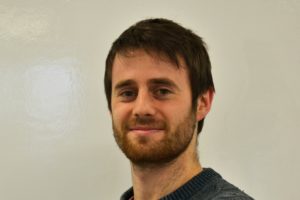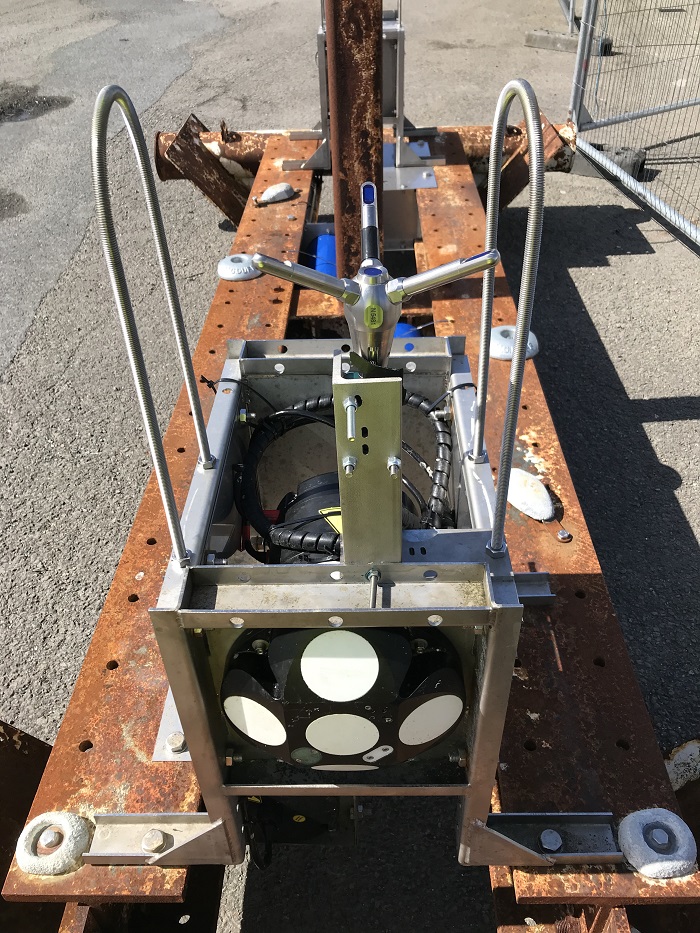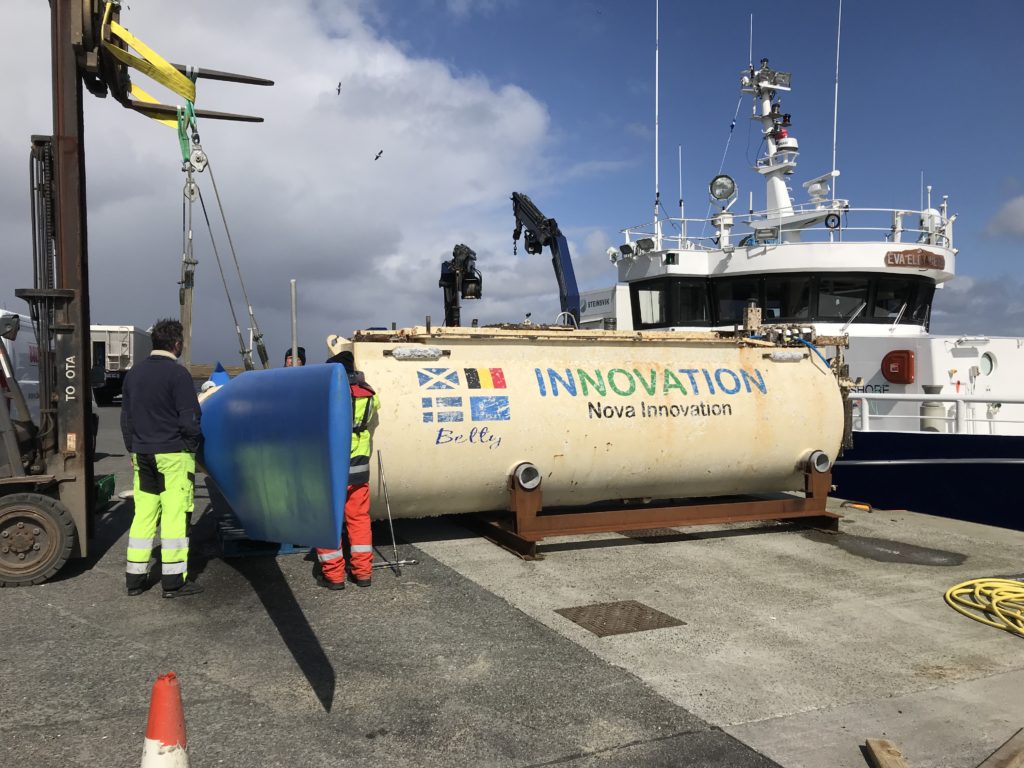Sam Porteous, Graduate Engineer at the Offshore Renewable Energy Catapult, on working at one of the world’s leading tidal arrays.

Yell is at the very top of Shetland: as you make your way up there, you travel on ever-smaller ferries and roads. We usually get the train up to Aberdeen the night before, then we take a bigger, overnight ferry to Lerwick, a smaller one north to Yell, and then travel down smaller and smaller lanes to Cullivoe.
It is not an isolated place: ferries leave every half hour to Yell from the mainland, and when you get to Cullivoe you find a busy fishing harbour with salmon and mussel farms, processing and ice-packing businesses too. We arrive by night and can’t see anything but awake in the morning to paradise – a white sandy beach in a sparkling blue bay. The Shetland White Nights in the summer mean we can put in a long working day at the array. We anticipated a good 14-hour stint ahead.
We get up to the site around 9am. We work in tandem with the Nova team: they are pulling out a turbine for a scheduled service, and we are installing our skid on its now empty sub-structure. The skid is a framework that I designed for instruments that will collect data on local tidal effects. This is a robust piece of equipment specially designed to withstand the conditions at sea.
We first unload all the tools and instruments then secure the sub-frames onto the main frame and bolt the batteries in place. The skid will be in place for around 30 days, which is how long its battery system is designed to last. This is the nerve-racking bit of my job: I always worry the instruments won’t record. They always do, but I’ll only relax when we retrieve the skid and download the data in a month’s time. That’s why we test and retest every connection, cable and mounting.
People ask why we don’t get a live data stream: that’s because there is little point in cabling it in place for such a small length of time. 4G does not work underwater, and WiFi only has a range of a few centimetres in seawater. Added to that we use acoustics (the best way to measure tidal flow), but these kinds of data do not transfer fast enough for a live feed.
Technical alert! Know your ADCPs and ADVs
We measure the tidal flow using two instruments: an ADCP, which means Acoustic Doppler Current Profiler, and an ADV, which means Acoustic Doppler Velocimeter (I know, it sounds like a species of dinosaur). One provides a large-scale view, and the other a small-scale view of how turbulent the tidal flow is in the sound, and that will influence how the turbines are arranged for maximum efficiency and power output. These learnings are already helping to drive down the cost of operating the array.
Now, in detail. The ADCP has five panels along the front of it, each of which emits sound in a cone for 30 metres ahead of it. The sound reflects off particles in the water, bits of sand, algae, anything like that, and is received back by the instrument. From the intervals between these bits of sound, the instrument can work out how fast the particles are going in their x, y and z directions.
The sound cone diverges, so by 30 metres distance you have a very wide cone of sound. We set the instruments up to split that into half metre bins along its length, so every half metre you get a small cone within the larger cone. For each of those small segments, you get an average flow speed and the direction of movement.
At the top of the skid is the ADV. It shoots out sound like the ADCP, but it focusses on a specific point rather than creating a huge cone. While the ADCP measures the larger eddies, in ten-metre wide swirls, the ADV measures tiny swirls of turbulence, like the kind you might see in your tea!

Awaiting the data avalanche…
When we reach the tidal array, each corner of the boat is hooked onto a four-point mooring with buoys attached to anchors in the sea-bed. The boat sits securely in the middle, but we only deploy during safe weather windows: you cannot recover a nacelle that weighs fifteen tonnes from a boat that is bobbing up and down on five-metre waves.
We need to complete the installation and lift the turbines in the space of a tidal window, when the tide is turning at slack water we have relatively still conditions for carrying out the work. Once we get back to shore, the Nova nacelle gets a good clean, revealing that this one is the famous Betty (yes, all the turbines have names!), and we head back for a curry with the team about 11pm in the evening.
I do think that my job is amazing. No-one has ever put tidal turbines into arrays and measured how they interact with each other before – we are the first people to do this! I know that in a month we’ll get an avalanche of data back from our skid when we lift it out of the water. This will all feed into the design of tidal turbines and help fuel the clean energy revolution.

Three questions: Sam Porteous
Who is your engineering hero?
Frank Whittle – he invented the turbo-jet engine which means we can get to New York for a long weekend. He’s so famous we even named an office meeting room after him!
When you were a child what did you want to be when you grew up?
The same as many other children – I wanted to be an astronaut!
Do you have any advice for anyone choosing a career right now in your field of work?
Try to get as much general engineering experience as you can, whether it’s working in an office, in a workshop or in a field. Taking practical engineering knowledge from other engineering areas and applying that into the renewable energy sector will help hugely in dealing with the many challenges that the renewable energy industry is up against.
If you have any questions about working, investing or doing business in the tidal energy sector, contact us.

